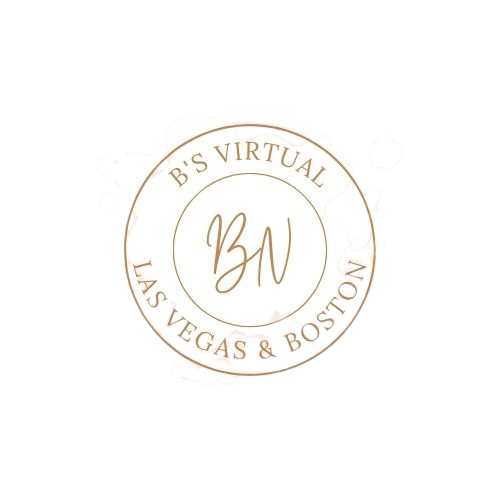1-800-652-3116
April 2024
Spring Cleaning For Businesses
🧹Spring cleaning isn't just for your home; it's a valuable practice for businesses too! As the season turns, it's the perfect time to refresh and rejuvenate your business environment, declutter physical and digital spaces, and set new goals. Adopting good practices for spring cleaning in your business can lead to increased productivity, efficiency, and a more pleasant work atmosphere.
🗃️One of the first steps in spring cleaning your business is to declutter and organize your physical space. This means going through files, paperwork, and office supplies, and getting rid of anything that's no longer necessary. Invest in storage solutions that help keep everything in its place. A clean and organized workspace can significantly boost employee morale and productivity. It’s also a good time to assess your office layout. Sometimes, a simple rearrangement of furniture can improve workflow and communication among team members.
🖥️Digital decluttering is equally important. Start by cleaning up your email inbox and organizing your files into properly labeled folders. It's also an opportune moment to review and update your business's social media profiles and website. Ensure all information is current and reflects your brand accurately. Additionally, review your digital security measures. Update software, change passwords, and consider a digital cleanup to ensure your business’s online presence is secure and efficient.
📓Finally, spring cleaning is also a metaphorical opportunity to refresh your business strategies. Review your goals and the progress you've made towards them. Are there any initiatives that haven't worked out as planned? Spring is a great time to pivot or adjust these strategies. Set new targets for the coming months and engage your team in this process to foster a sense of purpose and direction.
In conclusion, spring cleaning your business from the inside out can have a multitude of benefits. By taking the time to declutter, organize, and strategize, you’re not just tidying up; you’re setting the stage for growth and success in the coming year. Remember, a clean and well-organized business is a more productive and happier place to work. Contact us today to help assist in your spring cleaning with one of our professionals.
June
2021
How to Work the Phone: 6 Tricks
With business travel at an all-time low, there is simply no skill more important to business success (especially in sales) than the ability to build rapport during a telephone conversation. When you can't shake hands or look somebody in the eye, your voice (and your voice alone) must be able to communicate "I am capable and trustworthy."
Unfortunately, many people in business have no idea that they sound like idiots, hustlers or robots when they're talking on the phone. They talk too fast, they mumble, they blather, they make remarks that would only make sense with an accompanying hand gesture.
It's crazy. You wouldn't believe the stuff I've heard. And that's just the negative, sales-killing stuff. Very few people use their voice and word choice actively to create a better connection with the person at the other end of the line.
Here's a quick primer how to do this:
1. Expunge your verbal weaknesses.
Record some conversations (with the other person's agreement, natch) and see if you're doing something annoying–saying "uh ..." in the middle of every sentence, for instance, or slapping a "you know ..." at the end.
Important: Never, ever turn a statement into a question by putting a little uptick at the end; it's a huge credibility killer. Same goes for regional accents that carry a stigma in other regions. If necessary, hire a vocal coach.
2. Always have an agenda.
Never have a business conversation, especially on the phone, without knowing exactly what you're trying to accomplish. This is also a good idea when meeting face to face or emailing, but it's even more important during a phone call. Two key reasons:
- You may not have the other person's full attention.
- Unlike email, it's real time–which means you can't craft a message and then edit it before hitting "send."
3. Listen (really) to the other person.
When in a conversation, most people barely hear what the other person is saying; instead, they're thinking about what they're going to say next. That's really stupid during a phone conversation because nuances are much harder to catch than if you're face to face.
It takes a bit of practice, but what you need to do is suspend your "what do I say next?" until after the other person is done speaking.
4. Take a second before each response.
When you pause before responding, the other person knows that you've listened. If, by contrast, you jump right in immediately with your response (or worse, cut the other person off), you've just communicated that you think your own thoughts are far more important than anything the other person could have said.
5. Listen (really) to your own voice.
This is the flip side of listening to the other person. When in a conversation, most people, as they talk, are thinking about what the other person is going to say next. That almost guarantees you'll communicate poorly.
Instead, listen to your own voice as if you were listening to another person. (By the way, this is much easier if you're following rules 1 and 3.)
6. Adapt your tonality to match.
As you speak, gradually take on the least obvious elements of other person's voice. The key here is to make it subtle, not obvious–lest the changes fall flat or, worse, seem mocking.
For example, if you're talking with somebody with a Mississippi accent, draw out your vowels ever so slightly–but don't cram "y'all" into your normal speaking pattern. Believe it or not, this trick really does build rapport quickly.
One final note: I probably don't need to say that the rules above also apply to face-to-face conversations. However, the rules are not quite as important in person, when your body language and appearance create enough interference that things like voice tonality can get lost in the mix. This is especially true for people who are very attractive. Back when I was single, I was often amazed at how an individual who was fascinating in person could be annoying over the phone.
In fact, if I can make a non-scientific observation, it often seems that there's an inverse relationship between physical attractiveness and good phone skills. It's almost as if the "beautiful people" have become dependent upon their looks to smooth over their character flaws–flaws that emerge, big time, when they're on the phone.
Tips & Tricks for Small Businesses
Inbox Zero
When I first started out as a small virtual business, wayyyyy before we even knew what COVID-19 was, I struggled with managing multiple clients that I had and keeping everything organized. My email was the worst! I would skip one day and come back to my inbox with over 200+ emails to catch up on. Needless to say this caused me to become overwhelmed and not want to even look at my inbox at all.
Thankfully, I learned a great process that I put into action that helped not only myself, but all of our Virtual Administrative Assistants within our company to help manage our email inboxes and I wanted to share that with you.
Though we do offer email management, there are still going to be times that you, yourself, as a business owner will need to check your inbox and filter through some of the mess. We utilize the method called "Inbox Zero".
Inbox Zero is a great process for businesses or people whom receive tons of email daily and can't seem to get through it all in time. As a result of that, you are missing out on possible new work, colleague connections for referrals, missed payments or communication with your current customers/clients. So let's dig into what Zero Inbox is, means and how it can help you in your business or personal life.
What is Inbox Zero? Inbox Zero is a rigorous approach to email management at keeping your inbox empty, or almost empty. Productivity expert Merlin Mann, came up with this wonderful process for businesses and people to utilize efficiency in managing their email. According to Mann, the zero is not a reference to the number of messages in your inbox, but rather the amount of time your brain is in your inbox. Mann's point is that time and attention are finite, and when an inbox is confused with a "to-do list" productivity suffers.
How do we use the Inbox Zero Process? First, we need to identify what actions we need to take for each email we receive. Mann, identifies five possible actions for each email: Delete, Delegate, Respond, Defer and Do. Inbox Zero, almost like a change in your daily routine is a mindset and needs to be practiced daily to stick with the routine. So let's take the steps to implementing Inbox Zero and staying there.
- REFRAME THE WAY YOU THINK ABOUT YOUR INBOX: Look at your inbox and see how many message have been sitting there for 24 hours or more. If the answer is anything other than "zero", it's time to step back and reevaluate your strategy for managing email.
- START THINKING OF EMAIL LIKE A MESSAGING SERVICE: The secret is to think of email like a messaging service: Ask yourself how you would compose any given email if it were a text message. Make it a touch more formal, perhaps, and add in pleasantries as appropriate, and there is your message.
- STOP WRITING THE SAME STUFF OVER AND OVER: We all have our own sets of stock emails—the standard messages we write over and over for our work or personal affairs. Maybe it’s making an introduction, declining an invitation, or sending an expected document. Whatever the case may be, you almost certainly waste your time (and test your sanity) by hammering it out repeatedly, day in and day out. So here’s the fix: Stop repeating yourself. Almost every email service has some sort of system for creating and using templates. Take 10 minutes to create templates for all of your recurring messages, then take care of all future instances with a two-second click.
- SEND YOUR TIME CONSUMING CLUTTER AWAY: If you’re anything like me, less than 10% of your incoming mail is actually pertinent—in other words, anything you need to know or that requires a response. And that means a staggering 90% of your email is likely doing little more than eating up your day. Let’s cut it off at the source, shall we? First, the easy part: For the next week, unsubscribe from every list-based email you get—unless you really, truly need it or benefit from receiving it. Next, create filters for those hard to unsubscribe or recurring emails that you can't seem to get rid of. Google's Gmail already has these preset in their platform, but it is as easy as clicking on an unwanted email and at the top marking it as junk. That way it is never to be seen in your inbox again!
- STOP ORGANIZING YOUR EMAIL!: I was the worst culprit of this! I spend hours and time setting up folders in my email and creating rules to drop them into those respective folders, NO! NO! NO!... In the physical world, devoting time to organizing documents into folders makes a lot of sense—because how else are you going to find all those papers when you need them? In the virtual world of email, however, that same system has turned into a time-wasting shackle. The fastest way to find an old email is almost always by searching—and consequently, clinging onto a dated method of meticulous label-placing and folder-filing is giving yourself extra work for no real reason. So you know what? As a wise virtual princess once said, let it go. Stop worrying about organizing all of your incoming email and just power through it. Then, when you need to find something in the future, search.
- CONSOLIDATE YOUR EMAIL HANDLING SCHEDULE: If you were to set out to devise the most annoying and ineffective system for email management, you’d probably come up with something where a sound or alert interrupted you every time a new message comes in, commandeering your attention and while you’re busy doing something else. And yet that’s precisely how most of us deal with email—in the most productivity-wrecking manner possible. Study after study shows that switching tasks causes us to work less effectively and efficiently, with some research suggesting we lose as much as 40% of our productivity by hopping between multiple things. Opening up email is no exception. So stop fighting your brain’s nature and set up a system that works with your brain instead of against it. Pick a handful of designated times throughout the day to deal with email—maybe mid-morning, after lunch, and late afternoon—and then stop peeking at your inbox outside of those windows. Set yourself up for success by keeping your email app closed by default and open only during the times you actively need it. And turn off email notifications on both your computer and your phone. If you’re worried about missing any urgent incoming messages—messages that actually demand immediate attention and can’t wait a couple hours for a response—take a few minutes to create custom notifications that’ll alert you only about those highest-priority messages. The end result is a win-win: You’ll manage your email more efficiently by tackling it in a small number of dedicated moments, and you’ll be more focused and productive with the rest of your day without the constant barrage of inbox-oriented interruptions.
Finally, here are some great email tips from Mann himself to put Inox Zero into full affect!
Don't leave the email client open
Process email periodically throughout the day, possibly at the top of each hour
First, delete or archive as many of your new messages as possible
Then forward what can best be answered by someone else
Immediately respond to any new messages that can be answered in two minutes or less Move new messages that require more than two minutes to answer -- and messages that can be answered later -- to a separate "Requires Response" folder.
Set aside time each day to respond to email in the "requires response" folder or chip away at mail in this folder throughout the day.
We hope that you found this article helpful and welcome you to return back for more helpful Tricks & Tips to help make your processes more efficient and less time consuming for you and your teams.
- Bettia Torres - B's Virtual Admins

Why A Virtual Assistant is Important For Your Business.
Please read below for for 5 Key Reasons why a VA is better...
- Reduced Costs - The number one reason for hiring a virtual assistant is clearly cost reduction. Most business owners and entrepreneurs hire VA's to reduce overhead in lowering salaries and operations costs: instead of hiring a full time employee, VA's at B's Virtual operate on a time and material cost. Meaning that you are only billed for the actual time they work vs. an 8 hour shift that might not be as productive. Additionally, they are working remotely which means you won't have to pay extra costs like office internet, laptop and other office related costs.
- Increase efficiency by outsourcing non-core tasks - Another great reason to hire a VA is to allow businesses to focus on their core competencies. Here's how: Businesses and Entrepreneurs deal with many non-core activities like sending emails and newsletters, handling customer queries, internet research, scheduling meetings and data entry to name a few. While these are necessary tasks, they are not core tasks that need to be done by the in-house team. By outsourcing your non-core activities, this lets you invest your time and resources into tasks that need to be done by you.
- Scaling Your Business Operations Faster - VA's can help you scale your business operations quickly as they give you the ability to quickly hire talent on a project by project basis. You can easily cope with your increasing work demands without having to rush your recruitment process.
- 24/7 Customer Service - These days, most businesses have customers spread across the globe. But when you business and staff are only operating out of one area, coping with global needs and international time zones can be difficult. Luckily, as VA's are base remotely, you can hire them across the globe to cater to different time zones. This way, you and your staff can maintain a good work-life balance while still being able to attend to customers 24/7.
- Free Up Time for Strategic Thinking - As VA's can perform your non-core activities, you have more time to focus on growing your business. Rather than wasting time and resources in doing day-to-day operations, you can invest that time to think strategically about your business from a long-term perspective. This helps you to set goals and guide your company for better performance and long-term success.
We hope you enjoyed this article and please check back often for more helpful articles, tips and tools to help your business succeed.
-Bettia Torres, B's Virtual Admins
We need your consent to load the translations
We use a third-party service to translate the website content that may collect data about your activity. Please review the details in the privacy policy and accept the service to view the translations.


